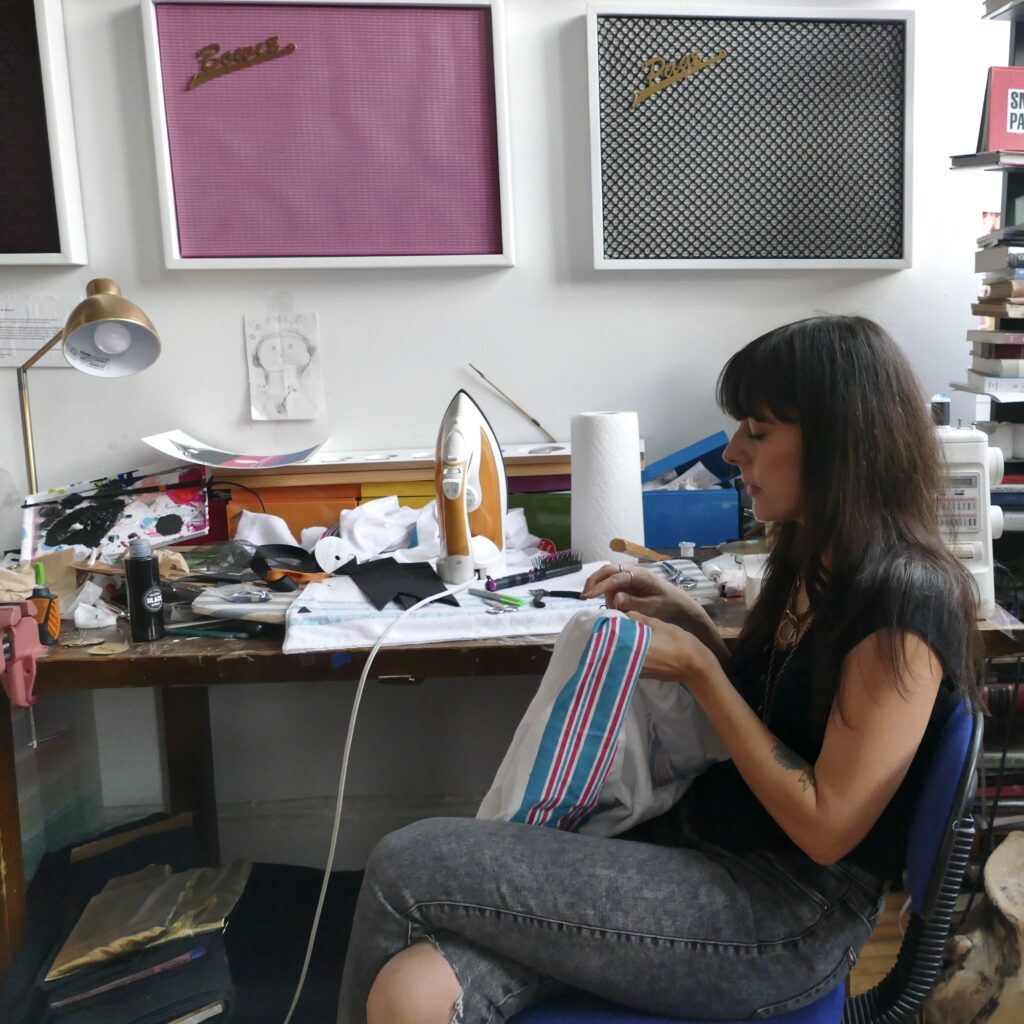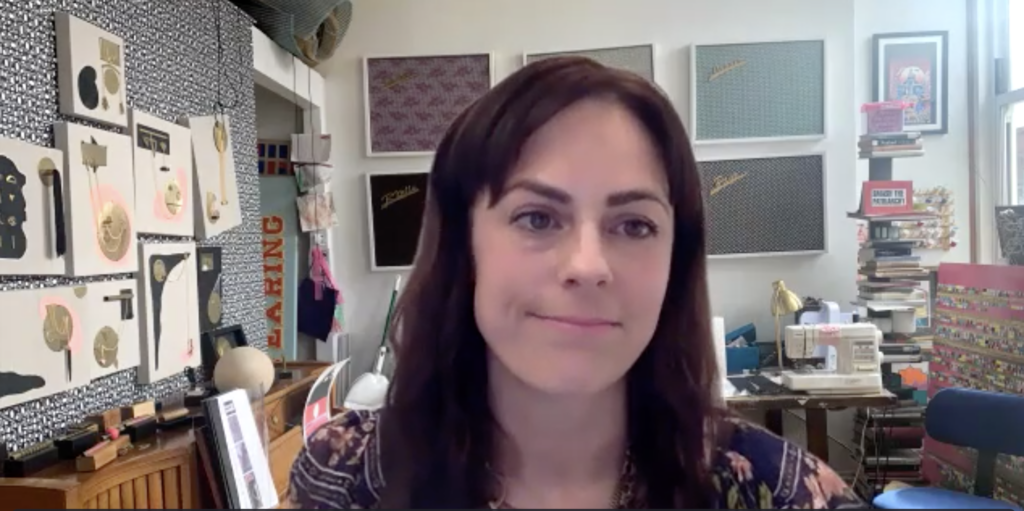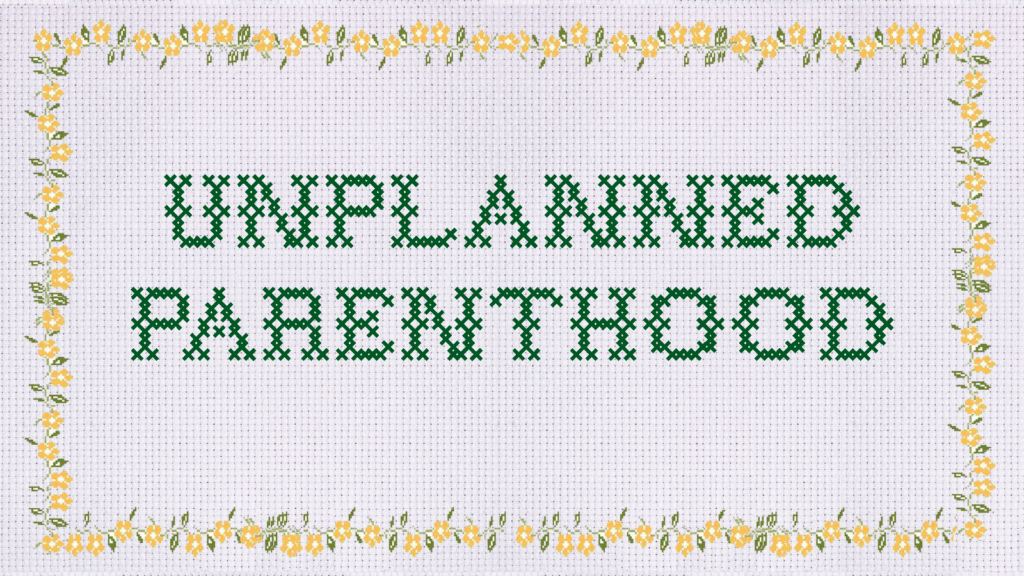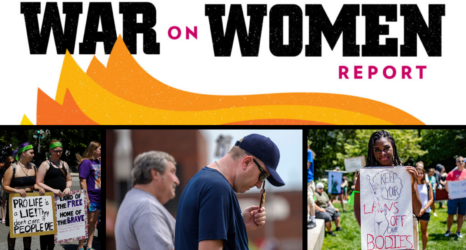
It was fitting that artist and activist Michelle Hartney launched UNPLANNED PARENTHOOD on #ThxBirthControl Day: The collaborative textile-based installation connects the dots between historical attacks on birth control access and the contemporary need for an intersectional reproductive justice movement. It also compels us to broaden our focus from attacks on abortion rights to attacks on all forms of family planning—and hold our foremothers accountable for the ways in which they failed to protect and defend everyone’s reproductive freedom.
Hartney’s installation will require the help of hundreds of volunteers from across the country. Sign up to help and you’ll receive a letter—one of 250,000 sent to Margaret Sanger before birth control information was legal to disseminate by law, and access to contraception was even more forbidden. The letters, from a selection Sanger published in 1928 called Motherhood in Bondage, bring to life the testimony of women who were desperate to control their own destinies. After volunteers hand-write the letters, Hartney will stitch them onto antique wedding dress fabric dyed in dandelion.
“I liked the idea of someone re-enacting the moment these women took it upon themselves to get help and try to change their lives, and seek out a way to have some control over their destinies,” Hartney told me during a fireside chat Wednesday at The Jane Club, a digital community for women that prides itself on supporting mothers.
“Working with women across the country to produce these pieces, to me, is an extension of the goal I have here—to demand that we build a reproductive rights movement big enough for everyone. It honors the women who wrote the letters, but it also brings in the generations being impacted 100 years later by the same patriarchal laws and restrictions.”
Click here to sign up to volunteer and be part of UNPLANNED PARENTHOOD, and keep reading for more from our conversation—which explored current attacks on birth control, the urgency of reckoning with Margaret Sanger’s legacy, and the power of community in the fight for equality.
This interview has been condensed for length and clarity.

Carmen Rios: I always start with an inception story. How did you think up this project? What made you decide to work on UNPLANNED PARENTHOOD now? Why this issue, in this moment?
Michelle Hartney: For the past seven years, I have been making a lot of work about maternal healthcare issues—covering topics such as the United States’ high maternal mortality rate, postpartum PTSD, obstetric abuse, and how racism and misogyny affect birth outcomes in America. Reproductive health issues are really important to me. I see access to birth control as an important part of women’s healthcare—and it directly affects maternal health outcomes—so it was really only a matter of time before I got the opportunity to make work about family planning.
My work with maternal healthcare issues was put on hold for four years after Trump got elected; I was really focusing on making work about the resistance, #MeToo, cancel culture and misogyny in art institutions. A lot of it was reactionary art. I was just trying to deal with all the crazy things going on politically.
When Biden was elected, I felt like we weren’t in daily crisis mode—and that gave me the space to breathe and go back to focusing on maternal healthcare issues. I knew that I wanted to use the letters [from Motherhood in Bondage] in a piece for about seven years, so I already had the basic concept of the project figured out. The visual took some time to come up with, and I’m still working that out in the studio.
Of course, the timing ended up panning out. We are in the middle of a really scary time. I feel like we are just holding our breath to see what the Supreme Court decides [in various abortion rights cases], and we are bracing ourselves to lose Roe and this last century of progress. But we need to be careful to not focus solely on abortion access—because Republicans are starting to increasingly blur the lines between birth control and abortion in their attempts to roll back our rights.
In just the last 10 years, birth control became a hot-button issue because of coverage in Obamacare, and we saw so much resistance to access by private corporations but also within our government. Recently, in Missouri, Republican lawmakers were debating restricting Medicaid coverage of birth control. Republicans in congress are flat out lying by conflating medications that prevent pregnancy with medications that end pregnancy. A new survey from Power to Decide even found that 69% of people are concerned about the future of birth control access.
Birth control is actively under attack in the U.S. It’s important that we do everything we can do fight for our right to have control over our bodies.
We need to be careful to not focus solely on abortion access—because Republicans are starting to increasingly blur the lines between birth control and abortion in their attempts to roll back our rights.
Rios: And talk to me about Motherhood in Bondage. When did you discover this text, and what about it remains resonant and powerful to you?
Hartney: After the birth of my children, I got really interested in learning more about the history of childbirth, and started doing research on how women give birth in America, and how that has drastically changed over the course of the last 120 years.
I came across the book while doing this research, and I couldn’t get the stories in the book out of my mind, because the letters are so heartbreaking. The people who were writing for help were so desperate to prevent future pregnancies that many of them were suicidal. Many of the women were very poor; some had 17, 18 or 19 kids. They just wanted to stop getting pregnant—and it was illegal for them to do that.
It was illegal for a doctor to give them information about birth control. In some states like Connecticut, even a married couple could suddenly be sent to prison for a year for using birth control in the privacy of their own bedrooms.
This was about men controlling women’s bodies and giving them no choice but to become mothers. This is the same exact thing we’re seeing today, with attacks on not only abortion but the full range of reproductive health care we need to control our destinies. These letters are a century old, but this isn’t ancient history: Millions of women still lack access to birth control, even though nearly 9 in 10 adults agree that everyone deserves access to the full range of birth control methods.
It’s so cruel to force pregnancy on people. These letters are testimony to that.

Rios: Something to me that’s eerie about any project that looks back at reproductive rights in the U.S. is how little has changed. I still remember when we told the stories of women who died or suffered to obtain abortion before Roe at Ms. We received an essay from someone who lived in Texas—a modern story—and it was shocking how closely it fit into the mix. To imagine that women today in so many cities and counties and states are just as desperate for unfettered access to comprehensive reproductive care right now is devastating.
How do you hope art like your own can lead to progress?
Hartney: It’s so important that we learn from history. The letters that these women were writing are an incredibly important part of U.S. history. They document the desperation and pain the US government caused women by making it illegal to prevent pregnancy.
It wasn’t all that long ago that simply preventing pregnancy was illegal: Sanger was arrested in 1916 for opening the first birth control clinic in the US, which ultimately resulted in the Crane decision in 1918 that allowed women to use birth control for therapeutic purposes, but it wasn’t until 1936 that doctors were legally allowed to distribute contraceptives across state lines. This is all still quite recent. I think it’s hard for people to wrap their brains around the idea that the government was essentially forcing parenthood, and childbearing people have had access to abortion for almost 50 years it creates distance between that time period—so it’s easy to push it in the back of our minds and forget that not all that long ago, people with uteruses had no control over their destinies.
I hope art projects like this can help more people see how important it is that we continue to fight for reproductive rights. Not many people know about these letters, so I hope this project can get under people’s skin and open their eyes and help them realize how important it is to pay attention to history.
I founded an alliance in 2016 connecting feminist artists and activists, so a big part of this installation for me, too, is not only the art, but what I do with it after the cohesive collection is complete. I want to partner with an intersectional reproductive justice organization and use this installation to educate folks not only on the history, but on the way forward—and how much is at stake if we don’t figure out how to come together and win reproductive freedom for all.
Rios: Which is a perfect segue into Sanger. Your intention is also to reckon with her racism—and the racism that continues to persist in the movement for reproductive justice. How do you plan to walk this line: using her book as source material while also holding space for critique and reflection as an artist, and for the viewer?
Hartney: That’s a really important part of this project because it’s not only about reproductive justice, this project is also about cancel culture. How do we move forward and discuss the people who have made important contributions, that have changed the world, but have done horrible things? For a long time, white people glossed over Sanger’s racism. She has been treated as a hero and regularly honored without criticism for her support of white supremacy.
We are in a super messy phase right now where we are trying to figure how what to do with these people. What we have learned is: We can’t erase them and pretend they don’t exist, because if we erase history, we cannot learn from it, and we erase the harm they caused. I think it’s important that artists and writers and all cultural producers make work to correct the narratives that are out there.
Sanger’s book was my starting point, because it was and is such a rare archive of testimony from her time—but I’m focusing the content of the installation on the women who wrote those letters in an attempt to de-center her. I’m purposefully launching the project from the start being critical of her legacy, and throughout, I won’t let her off the hook. Context in art is really important to me. I will use partnerships, wall labels, and other elements of production to continue telling a fuller story about Sanger as the installation begins to take shape and I can begin engaging its viewers.
What I want to do is reckon with the racism of not only Sanger, either, but the feminist movement itself. We know that we won’t achieve reproductive freedom without an intersectional movement—I want to inspire people to do better so we can get there.
Rios: An author once told me that “all writers are activists,” even if they don’t know it. I feel like that can be broadened out, too—all creative folks have an agenda because we all have a unique perspective, which really means there may be no apolitical art in the world. Why is bringing feminism into your work so explicitly such a core part of your practice?
Hartney: I think my practice is my way of coping with the patriarchy. I have an incredible amount of anger and sadness in me that is a direct result of the misogyny and violence I have experienced at the hands of men. It affects me every day of my life and often makes me feel helpless, so fighting the patriarchy with my art is healing for me.
I am actually also an art therapist—but I stopped that work when I became a mom to focus on my art full time, and I think this is my way of filling that void. It’s obviously not the same as working with individual clients, but the participatory, cathartic elements or hands-on actions in my work have become my new way to offer an element of healing to other people who are also affected by misogyny.
Rios: Gloria Steinem has said that hope is a form of planning. While you were putting this piece together, attacks on reproductive justice ramped up in such an extreme way. Yet to plan to do something about it means you have hope. This is a question I love, from Jane Club DEI Chief Neelamjit Dhaliwal: As we strive to interrupt and disrupt oppressive systems, what do you believe you regain? What joy is claimed that you hadn’t known you’d lost?
Hartney: This work has given me the gift of community. Fighting the patriarchy connected me with other feminist artists and that has been an incredible gift. This work can be exhausting and doing it alone can make all of us feel powerless. But speaking up helped me find my people. That gives me hope—and joy.
Click here to learn more about the installation and volunteer to hand-write a letter—from home or during a forthcoming write-in with Michelle in Chicago.
Up next:





